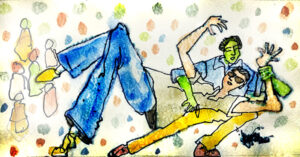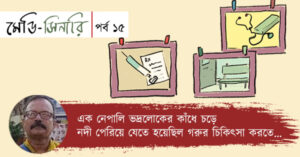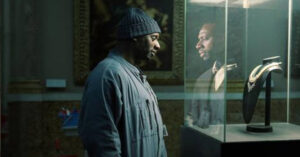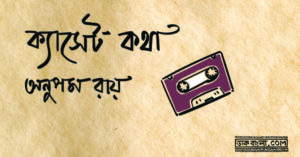Satyajit’s notebooks were reservoirs of his immense, inimitable creativity. He jotted down yet-to-readied scripts and blueprints of songs to be used on film, background scores, costume designs for his characters, designs for the posters, title cards and booklets of his films and a thousand other minute details in these notebooks. As he developed scripts, he would sketch possible frames along the dialogues, so that he had an exact visual idea, on paper, even before he started shooting. These notebooks were his workstation.
The following are 10 pages from his notebooks, placed in context.
Apur Sansar (‘The World of Apu’) – ‘Apu did not accept his son Kajal after his wife Aparna died at childbirth. The boy has grown up in the village. There’s no one to look after him. He’s quite wild. He goes about shooting arrows at birds and killing, and he’s not unhappy. He takes great joy in a little sparrow that he has just managed to kill with a sling. He’s a strange sort of boy. There’s a poetic quality about him that he’s uncared for’. (Ray’s comments in the Flaherty seminar, Vermont, 1958).
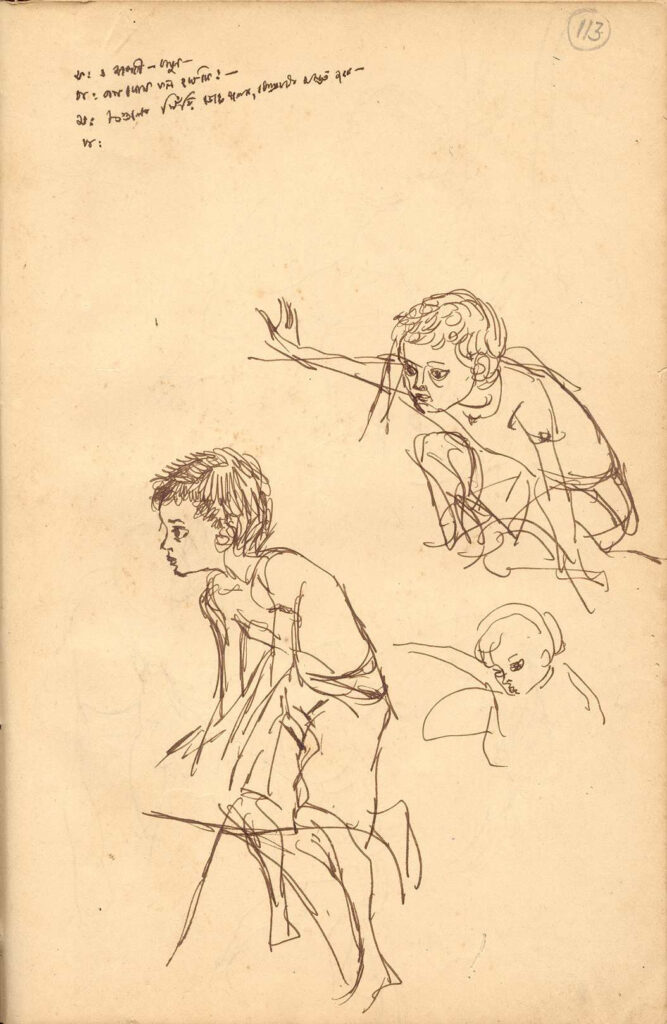
Aranyer Din Ratri (‘Days and Nights in the Forest’) – Aranyer Din Ratri is a film which tells the story of the sudden visit of four friends to a forest rest house at Palamau and their experiences for the next few days. Ray had meticulously designed the sketches for costumes of the four friends, even indicating the type of fabric to be used. Here we see the costumes they will be wearing on the first day – during the journey, after they reach the rest house and on their way towards a country liquor shop. The dresses are reflective of their social status and tell a lot about their individual psychology and attitude.
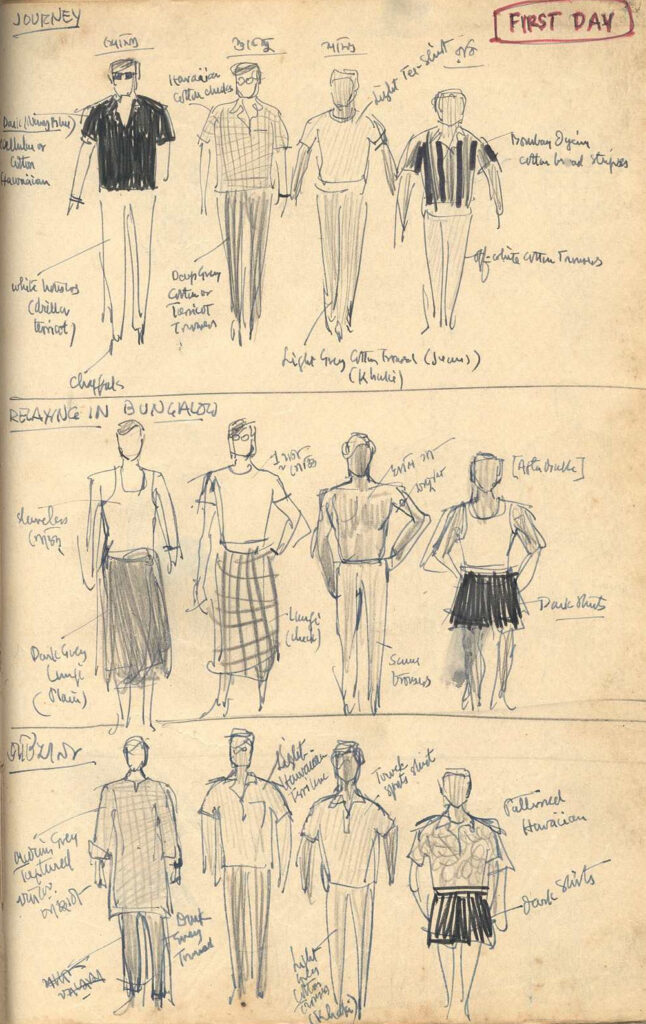
Jalsaghar (‘The Music Room’) – Jalsaghar was a film about a zamindar who was a real connoisseur of Indian classical music. He knows that his fortune is now lost, but still refuses to bow down to the nouveau riche businessman. The film records some of the most memorable musical performances by exponents of Hindustani classical music. Ray had toyed with various styles while designing the lettering of the word ‘Jalsaghar’.

Ashani Sanket (‘Distant Thunder’) – Ashani Sanket depicted the life of a village priest, Ganagacharan, and his family during the man-made Bengal famine of 1943. Ray’s unit built Gangacharan’s house in the Goalpara village in Birbhum district, following his detailed sketch of the house.
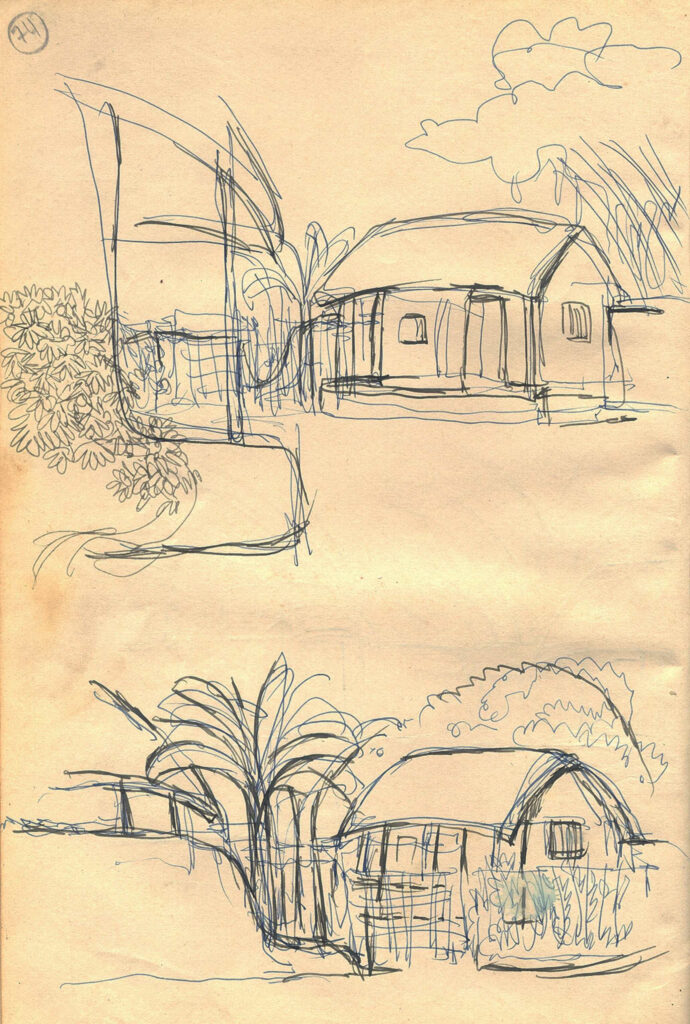
Devi (‘The Goddess’) – Devi tells the story of a young woman in a zamindar family who is thought to be a reincarnation of a goddess. The film showcases the religious dogmatism that is still relevant in our country. Ray tried out various calligraphic forms while designing the title of the film for the posters and advertisements. The two Bengali letters form an arch suggesting the top of a temple. The three eyes of Durga are also seen in the lettering. Some drafts of dialogue and other doodles by Ray are seen on the page. We also notice a doodle with the two letters S and R – probably for a logo for SR Productions.
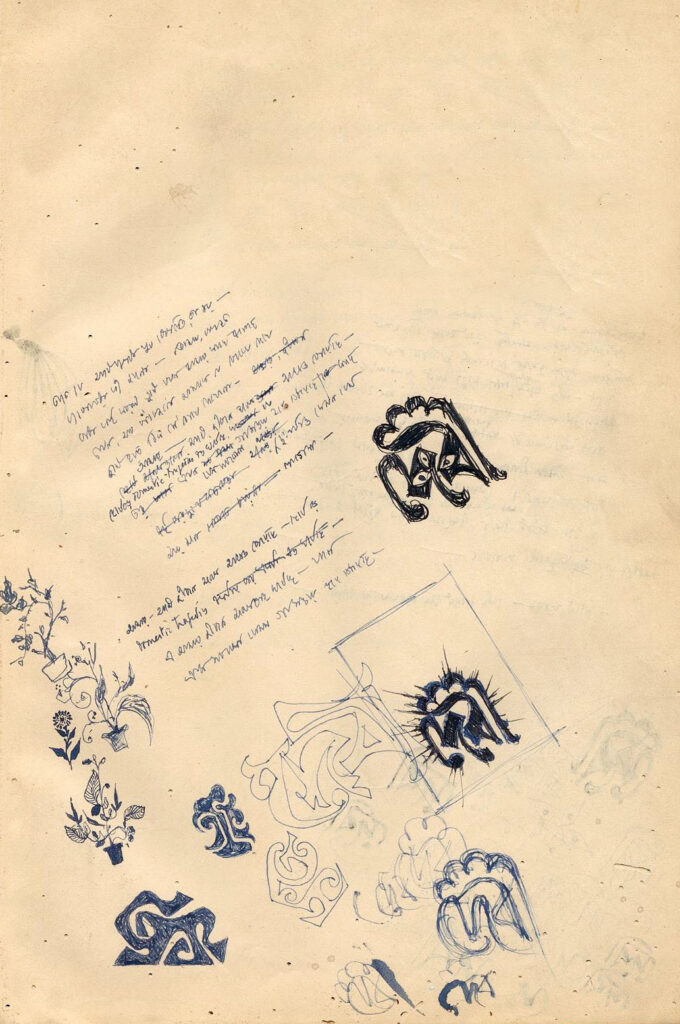
Kanchenjungha – The film is about a group of tourists from various urban backgrounds who meet together in Darjeeling. Ray wrote the screenplay in the Mt. Everest Hotel in Darjeeling. He also made a wonderful sketch of the Kanchenjungha using his fountain pen. The sketch bears his signature, location and the date: ‘Mt. Everest Hotel, room no. 88 – 21/10/1961’.
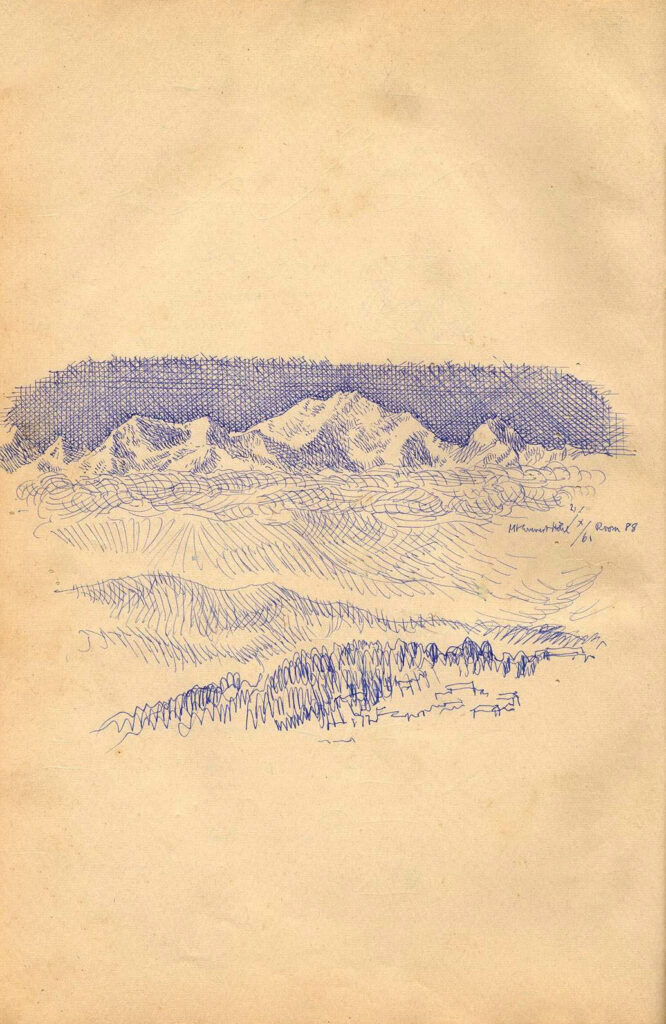
Kapurush o Mahapurush (‘The Coward’; The Holy Man’) – This is a twin film, with two short stories. Ray had tried out a variety of calligraphic patterns with the two Bengali words, ‘kapurush’ and ‘mahapurush’. These fountain pen doodles show his unique control over lettering forms and patterns.
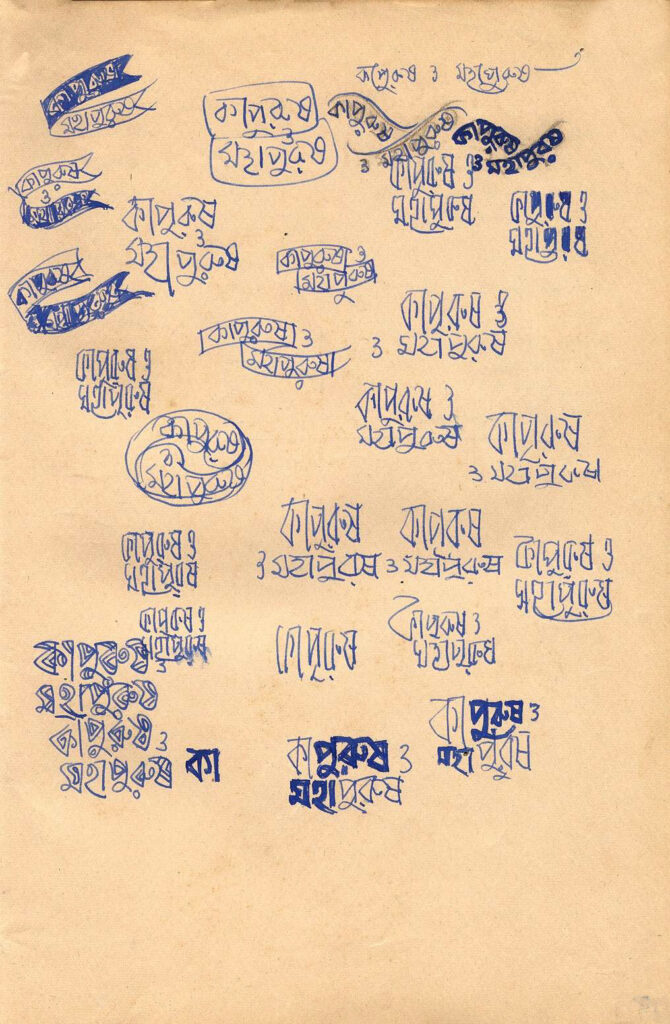
Nayak (‘The Hero’) – The film depicts the journey of a celebrated matinee idol in a vestibule train from Kolkata to Delhi and his interactions with his co-passengers. As with Ray, he did a detailed design of the set-up – showing the exact location of the characters in the first-class coupe, chair car and dining car, replete with seat numbers. Ray even showed the orientation of the sitting patterns in the train, both during the onward and return journey. All these sketches helped his brilliant art director Bansi Chandragupta build a set that seemed exactly like a real train in the movie theatre.

Shatranj ke Khilari (‘The Chess Players’) – Based on a short story by Munsi Premchand, the film shows the annexation of the princely state of Oudh by the British Empire and the activities of two chess-addicted noblemen, running as parallels. For filming the scene of British troops marching into Lucknow, Ray had sketched an amazingly detailed procession of British soldiers, showing different divisions of the army. The sketch mentions each and every characteristic feature of an army procession – showing the location of the band, large canons, small guns, the Union Jack, camels, horses, elephants, bullocks, poultry, dogs, palanquins – the list is endless. One marvels at the research work and thought put behind one particular scene.
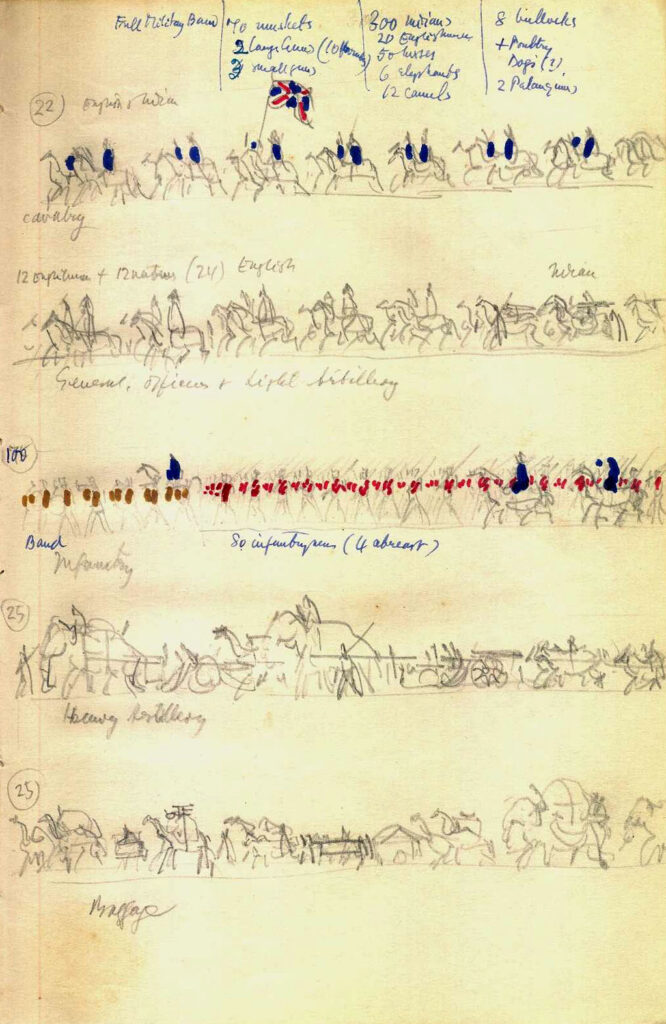
Jana Aranya (‘The Middleman’) – The films shows the helpless surrender of middle-class values to urban corruption. Here Ray had sketched the character of ‘Bishuda’ – played superbly by Utpal Dutt – from different angles, with make-up. Bishuda runs an order supply agency, and he introduces the hero, Somnath, to this ruthless world of supply and demand. Ray was a keen observer of facial expressions, which is evident from the features and contours of the profile sketch of Dutt as Bishuda.



